The Sony 300mm f/2.8 GM is a lightweight super-telephoto prime lens aimed primarily at sports and wildlife photographers who value portability and focal length flexibility when paired with Sony’s teleconverters. With the 1.4x teleconverter attached to the 300mm f/2.8 GM, the lens becomes a 420mm f/4. With the 2x teleconverter attached, it becomes a 600mm f/5.6.
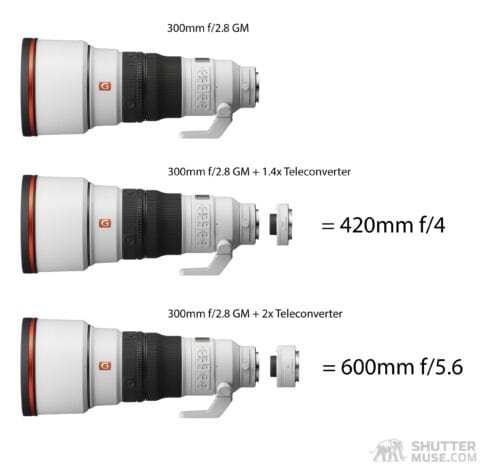
What makes the Sony 300mm GM lens particularly appealing is its low weight and excellent weight-to-focal length ratio when paired with teleconverters. The lens weighs just 3.24 lb (1470g), substantially undercutting the weight of the Sony 400mm f/2.8 GM (6.4 lb), the 600mm f/4 GM (6.7 lb), the 200-600mm G (4.65 lb) and the 400-800mm G (5.45 lb). To compete with the focal lengths covered by those lenses, though, using either the 1.4x or 2x teleconverter is necessary, leaving many people wondering about the image quality and autofocus performance with those combinations. In this post, I’ll tackle those questions and show you sample images taken with my Sony 300mm f/2.8 GM lens and both Sony teleconverters.

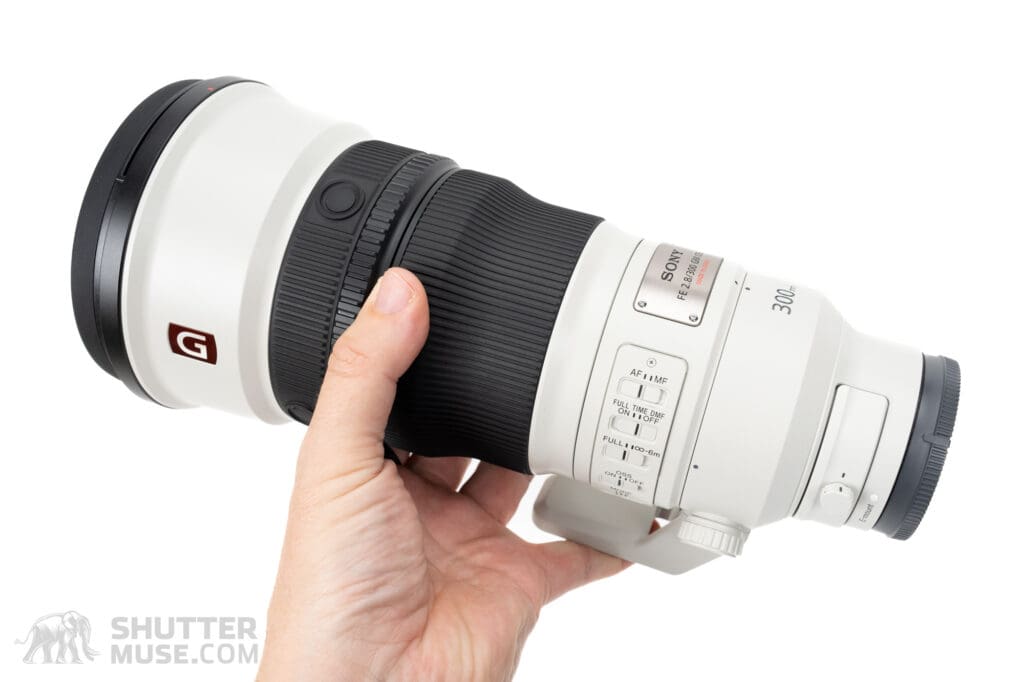
Why trust me? The internet is full of garbage written by AI and people who pretend to use the photo gear they are testing. On the other hand, I get out there and do the work, as evidenced by the images I create along the way and the stories I share with my followers. If you want to support an independent creator, please consider sharing this article, subscribing to my newsletter, leaving a tip, or purchasing through links on this page.
My Sony 300mm f/2.8 GM was purchased at retail price through regular retail channels. Don’t have yours yet? Support my efforts by buying it through one of the links below:
- Sony 300mm f/2.8 GM – Amazon / B&H / Adorama / Lensrentals / WEX (UK) / Camera Canada
- Sony 1.4x Teleconverter – Amazon / B&H / Adorama / Lensrentals / WEX (UK) / Camera Canada
- Sony 2x Teleconverter – Amazon / B&H / Adorama / Lensrentals / WEX (UK) / Camera Canada
Table of Contents
Focal Length Flexibility
Before we dig deeper into image quality and autofocus discussions, it’s worth underlining and demonstrating the focal length flexibility of the 300mm GM lens with the teleconverters. Naturally, it’s not as flexible as the telephoto G zooms that can move from 200-600mm or 400-800mm with a short twist. Still, quick in-field teleconverter changes can be possible, and for accepting that challenge over the zoom lens options, you are rewarded with a faster maximum aperture and an overall much sharper lens- for a price.
On my first trip with my 300mm GM, this beautiful male bald eagle patiently waited while I demonstrated the three available focal lengths: 300mm, 420mm, and 600mm. What has often struck me, and what I think is shown nicely in this set of three images, is how all three focal lengths have something to offer the wildlife photographer. I could be happy with any of these images, revealing more or less of the bird’s environment and allowing me to experiment with horizontal or vertical framing. The 300/400/600 combination is simply fantastic for wildlife.



1.4x Teleconverter + 300mm Image Quality and Autofocus Performance

Pairing the 300mm f/2.8 GM with the Sony 1.4x teleconverter gives you a compact 420mm f/4 lens that’s significantly better balanced, not to mention lighter at 3.70 lb (1677 g), than the 200-600mm G, 400-800mm G and 400mm f/2.8 GM lenses. This makes it far easier to handhold for long periods, more maneuverable for fast-action birds in flight, and less bulky in confined spaces such as safari vehicles, small boats, and hides. The balance of the lens, with its weight close to the mount, combined with the overall lighter weight, also makes it easier to handhold down to slower shutter speeds. The bare 300mm GM lens is simply a dream to handle, and since the 1.4x teleconverter adds minimal length or weight, this sentiment isn’t at all impacted in the 420mm f/4 configuration.
You may notice that I have a little less to say about the 1.4x teleconverter performance on this lens than I do in the next segment about 2x teleconverter performance. The reason for that is that this lens is simply outstanding at 420mm. With the 1.4x teleconverter in place, I could find no appreciable difference in autofocus performance compared to the bare lens on my a1, a1 II, or a9 III cameras. The two XD linear motors in the 300mm GM are lightning-fast and near-silent.
Taking a look at image quality, it is tack-sharp wide open at f/4, and you have to look really hard to find improvements at smaller apertures. If f/4 provides enough depth of field for my needs, I will have no problem shooting all day long with this wide-open lens. This is easily the best result I have ever seen with a 1.4x teleconverter. Even on my 600mm f/4 GM, I can usually pick the with-teleconverter shots in a blind test, but not with this 300mm GM and a pile of real-world images.

As a slight aside, I used to shoot with the Canon 400mm f/4 DO II lens back in the DSLR days and loved that combination of focal length and lens size. I’d always hoped Sony might make a lens like that, but as it turns out, the 300mm GM is lighter than that old Canon 400mm lens, and it’s sharper with the 1.4x teleconverter than the 400mm f/4 DO lens was without a teleconverter. This really is the best of all worlds, as it gives me the bonus of a wider 300mm frame and a faster f/2.8 aperture if I ever need it.
Ok, back to the question of 300mm image quality. The with-1.4x-teleconverter performance of Sony lenses has improved in recent years. I was highly impressed with the 70-200mm f/2.8 GM II lens and both teleconverters, and even the 400-800mm G does a good job if you can stomach the tiny maximum apertures. One area that can still suffer is the introduction of chromatic aberration, but I’m pleased to say that with the 1.4x teleconverter, this hasn’t been an issue for me on the 300mm GM.

I didn’t go out of my way trying to create a problem, but I can say that having shot with the lens for many months, I never found excessive lateral aberrations that needed correction. Usually, you might expect chromatic aberration issues towards the edge of an image with darker subjects on a bright background. Especially when shooting wide-open. And yet, even the closest scrutiny of a perched bald eagle sequence in a snowstorm, wide open at f/4, with a bright background, revealed no stray colors or fringing- see above.
While I didn’t spot any issues with lateral chromatic aberrations, I did come across some mild longitudinal aberrations (LoCA) that can show up in out-of-focus foreground or background areas. The color fringing I saw in the LoCA was relatively mild and not an obtrusive color. Still, it can cause increased contrast at the edge of out-of-focus objects when making significant tonal or color adjustments during post-processing. Where you’d hope to see a smooth bokeh transition from a foreground out-of-focus object to a distant out-of-focus background, you can end up with a much harder edge on the foreground object when edits cause large changes in contrast. Far from a deal-breaker, this can be minimized using local edits instead of broader global adjustments.

Bottom line 1.4x teleconverter performance: The 300mm GM is a masterpiece of a lens and its performance with a 1.4x teleconverter cements it, in my mind, as one of the best lenses ever produced. Many lenses have passed through my hands throughout my 20+ year career. Very few of them have ever put a smile on my face as wide as the 300mm GM does. I’m a big fan of a 400mm focal length, and I still can’t get over how good it feels to shoot with this lens and the 1.4x teleconverter. I’d have been happy if this was the performance of a 400mm f/4 lens. The fact that it’s a 300mm f/2.8 with a teleconverter makes it all the more impressive.

2x Teleconverter + 300mm Image Quality and Autofocus Performance



High-end super-telephoto lenses generally perform reasonably well with a 1.4x teleconverter, but moving up to a 2x teleconverter can be a different kettle of fish. I was incredibly pleased by the results of the Sony 300mm f/2.8 GM lens. This lens handles a 2x teleconverter better than any other lens I have tested. Shooting side-by-side with my 600mm f/4 GM, I found it hard to find any difference in autofocus acquisition speed or tracking accuracy when used with a Sony a1, a1 II, and a9 III in good light. Since the handling of the smaller, lighter 300mm GM is so much better than the 600mm GM, I actually found it easier to acquire focus and follow fast-moving subjects like birds in flight. This lens has become my favorite BIF tool.

Delving into the pixels on my computer, I was similarly pleased and surprised. I tried blind testing myself in Lightroom to pick photos taken with my 600mm f/4 GM and those with the 300mm f/2.8 GM + 2x teleconverter. In real-world shooting scenarios where many factors are at play, such as light levels and subsequently necessary ISO values, atmospheric conditions, and subject movement, I could not confidently choose which images were shot with either lens. That is quite astonishing, and it immediately had me considering whether I’d even need to keep my 600mm f/4 anymore.
Regarding wide-open f/5.6 performance with the 2x teleconverter, the lens is extremely sharp but can show minor spherical aberration in high-contrast areas, more evident in areas of high-frequency detail such as the fringe of a bird feather against a brighter background. Though present, it’s not an issue to the point I would ever avoid shooting wide-open, and it cleans up significantly at f/6.3. Contrast also steps up slightly as you stop down to f/6.3 and f/7.1.

Where you are more likely to be able to spot the difference between a more expensive lens like the 600mm GM and the 300mm GM +2x teleconverter is in the increased presence of lateral and axial (longitudinal, LoCA) chromatic aberration. Lateral, chromatic aberration is relatively easy to correct with post-processing and only really shows up when a darker object is against a white or highly bright background. I rarely had to fix this. Correcting lateral chromatic aberration in any sample images used in this section was unnecessary. Still, if you dig into the pixels of brighter images, it was slightly more evident than my 600mm GM.

Longitudinal aberration (LoCA) is when color is added to the fringes of objects in the out-of-focus foreground and background areas. Though far from terrible, the presence of longitudinal aberration, particularly in out-of-focus foreground objects, was often my most significant clue that a particular image was shot with the 300mm when I was performing my blind “taste test.” That said, a reasonably specific set of circumstances must align to make this visible without serious pixel-peeping. I’ve only ever found a handful of images requiring extra post-processing work due to LoCA’s presence with this lens+teleconverter combination. It’s this combination’s worst performing lens attribute, but still falls within my acceptable limits.
Bottom line: I cannot imagine anyone being dissatisfied with the performance of this lens when using a 2x teleconverter. It is sharper than my 200-600mm while at the same time being smaller, lighter, and having a larger maximum aperture. It is comparable with the 400-800mm in terms of sharpness but much smaller, lighter, and again delivers a significantly wider aperture. Your other options are to go with a 400mm or 600mm GM, which offer only marginal gains for their astronomic difference in price. Without letting my imagination run too wild and without completely disregarding optical physics, the performance of the 300mm f/2.8 GM lens with a 2x teleconverter is everything I hoped it would be. Since buying this lens, my 600mm f/4 GM has seen far less use than it used to.




Telephoto Specifications Compared

If you’re considering the 300mm f/2.8 GM, you’re probably also thinking about, or already own, one of Sony’s other super-telephoto prime lenses. Many users of the 200-600mm and 400-800mm G zooms may also consider stepping up to the 300mm GM. Here are how some of the critical specifications stack up.
| Lens | MFD | Max Mag’ | Weight | Price |
|---|---|---|---|---|
| Sony 200-600mm G | 7.87′ / 2.4 m | 0.2x | 4.65 lb / 2115 g | $1,999 |
| Sony 200-600mm G + 1.4x | 7.87′ / 2.4 m | 0.28x | 5.03 lb / 2282 g | $2,549 |
| Sony 200-600mm G + 2x | 7.87′ / 2.4 m | 0.4x | 5.12 lb / 2322 g | $3,099*1 |
| Sony 400-800mm G | 11.5′ / 3.5 m | 0.23x | 5.45 lb / 2470 g | $2,899 |
| Sony 400-800mm G + 1.4x | 11.5′ / 3.5 m | 0.32x | 5.81 lb / 2637 g | $3,449 |
| Sony 400-800mm G + 2x | 11.5′ / 3.5 m | 0.46x | 5.90 lb/ 2677 g | $3,999 |
| Sony 300mm f/2.8 GM | 6.57′ (2 m) | 0.16x | 3.24 lb / 1470 g | $5,999 |
| Sony 300mm f/2.8 GM + 1.4x | 6.57′ (2 m) | 0.22x | 3.61 lb/ 1637 g | $6,549 |
| Sony 300mm f/2.8 GM + 2x | 6.57′ (2 m) | 0.32x | 3.70 lb / 1677 g | $7,099*1 |
| Sony 400mm f/2.8 GM | 8.86′ / 2.7 m | 0.16x | 6.4 lb / 2895 g | $11,999 |
| Sony 400mm f/2.8 GM + 1.4x | 8.86′ / 2.7 m | 0.22x | 6.75 lb / 3062 g | $12,549 |
| Sony 400mm f/2.8 GM + 2x | 8.86′ / 2.7 m | 0.32x | 6.84 lb /3102 g | $13,099*1 |
| Sony 600mm f/4 GM | 14.8′ / 4.5 m | 0.14x | 6.70 lb / 3040 g | $12,999 |
| Sony 600mm f/4 GM + 1.4x | 14.8′ / 4.5 m | 0.2x | 7.07 lb / 3207 g | $13,549 |
| Sony 600mm f/4 GM + 2x | 14.8′ / 4.5 m | 0.28x | 7.16 lb/ 3247 g | $14,099*1 |
Why Does Teleconverter Performance Matter So Much With the 300mm GM?
The performance of the Sony 300mm f/2.8 GM lens with teleconverters is of great interest to many photographers. One of the reasons discussed below will stand out to you and best describe your situation. Still, all are worth consideration and may describe future scenarios that will become more relevant as your photography journey continues.
Faster Aperture Than G Zoom Telephotos

The 300mm f/2.8 GM lens sits at the mid-point of Sony’s super-telephoto lens lineup in terms of pricing. This makes it an enticing upgrade for users of the two zoom super-telephotos, the 200-600mm G and 400-800mm G, who wish for a faster aperture at a given focal length. The table below compares available maximum apertures at key focal lengths.
| Lens | 300mm | 420mm | 600mm | 800mm |
|---|---|---|---|---|
| Sony 200-600mm f/5.6-6.3 G | f/5.6 | f/6.3 | f/6.3 | f/9*1 |
| Sony 400-800mm f/6.3-8 G | N/A | f/6.3 | f/8 | f/8 |
| Sony 300mm f/2.8 GM | f/2.8 | f/4 | f/5.6 | N/A |
*1 using 1.4x teleconverter
The aperture advantage of the 300mm GM lens lessens as you extend its focal length but still represents a 1/3 stop advantage over the 200-600mm G lens at 600mm and a 1-stop advantage over the 400-800mm G lens at 600mm. Even though the 300mm GM lens maxes out at 600mm with the 2x extender, some 400-800mm G users may feel the added stop of light at 600mm, and 1 1/3 stop advantage at 420mm is worth sacrificing the longer reach and flexibility of the zoom.
A Smaller, Lighter Alternative to the 400mm and 600mm GM Lenses

| Lens | 300mm | 400/420mm | 560/600mm | 800/840mm | 1200mm |
|---|---|---|---|---|---|
| Sony 300mm f/2.8 GM | f/2.8 | f/4*1 | f/5.6*2 | N/A | N/A |
| Sony 400mm f/2.8 GM | N/A | f/2.8 | f/4*1 | f/5.6*2 | N/A |
| Sony 600mm f/4 GM | N/A | N/A | f/4 | f/5.6*1 | f/8*2 |
*1 using 1.4x teleconverter
*2 using 2x teleconverter
The 300mm lens’s small size, lower price, and light weight make it an intriguing alternative to those considering the purchase of 400mm f/2.8 GM and 600mm f/4 GM lenses. The 400mm f/2.8 GM weighs 6.4 lb, while the 300mm f/2.8 GM with the 1.4x teleconverter gives you a 420mm f/4 lens weighing just 3.61 lb. You lose a stop of light at that comparable focal length but save considerable weight and give yourself the option of a 300mm focal length. The 600mm f/4 GM weighs 6.7 lb, while the 300mm f/2.8 GM with an attached 2x teleconverter gives you 600mm f/5.6 at just 3.7 lb. Not to mention, there is a $10,000 cost savings.
Aside from the maximum aperture disadvantage of the 300mm + teleconverter combination over the larger primes’ native focal length, the second most significant disadvantage is the maximum focal length option. The 300mm GM with the 2x teleconverter gets you to 600mm, whereas the 400mm GM and 600mm GM can get you to 800mm or 1200mm, respectively.
Second Lens Alongside the 400mm GM or 600mm GM
The focal length gap between the 600mm f/4 GM and the 300mm f/2.8 GM is also large enough that many 600mm users will consider the 300mm lens as a second lens in their bag. Additionally, the weight and size difference between the 400mm, 600mm, and 300mm GM lenses is also significant enough that many existing 600mm GM or 400mm GM users will consider the 300mm as a lighter-weight option to keep in their kit for days when the 400mm or 600mm is just too large or heavy to carry.
Improved Close Focus and Magnification
An often-overlooked and misunderstood pair of specifications for super-telephoto lenses is the minimum focus distance and maximum magnification. The 300mm f/2.8 GM has a much shorter minimum focus distance and larger magnification than the 400mm GM and 600mm GM. This means that if your subject allows you to approach it close enough, like the tiny hummingbird in the photo above, it will be much larger in the frame than it would be with the bare 400mm and 600mm options.
For example, the 300mm GM with the 2x teleconverter has a magnification of 0.32x at 600mm. On the other hand, the 600mm GM only has a 0.14x magnification at 600mm. A small subject can, therefore, be more than twice as big in the frame with the 300mm GM + 2x teleconverter than with the 600mm f/4 at its minimum focus distance. If you shoot small, relatively approachable subjects, choosing the 300mm GM instead of the 400mm or 600mm GM, or adding it to your kit, can make a difference when a 420mm or 600mm focal length is optimal.
These Options All Require Teleconverters
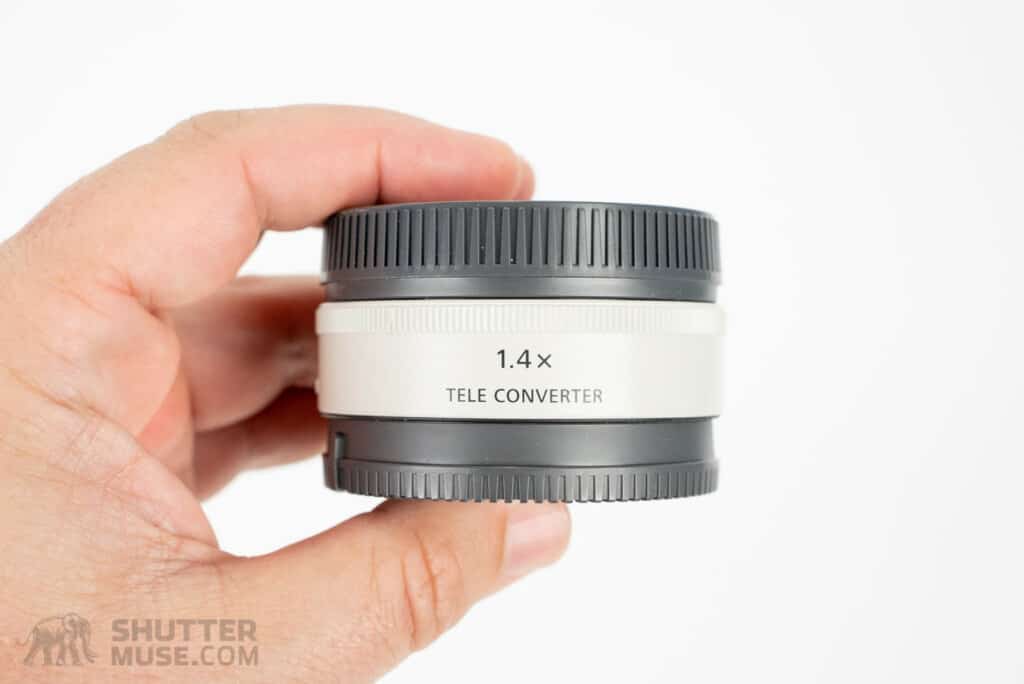
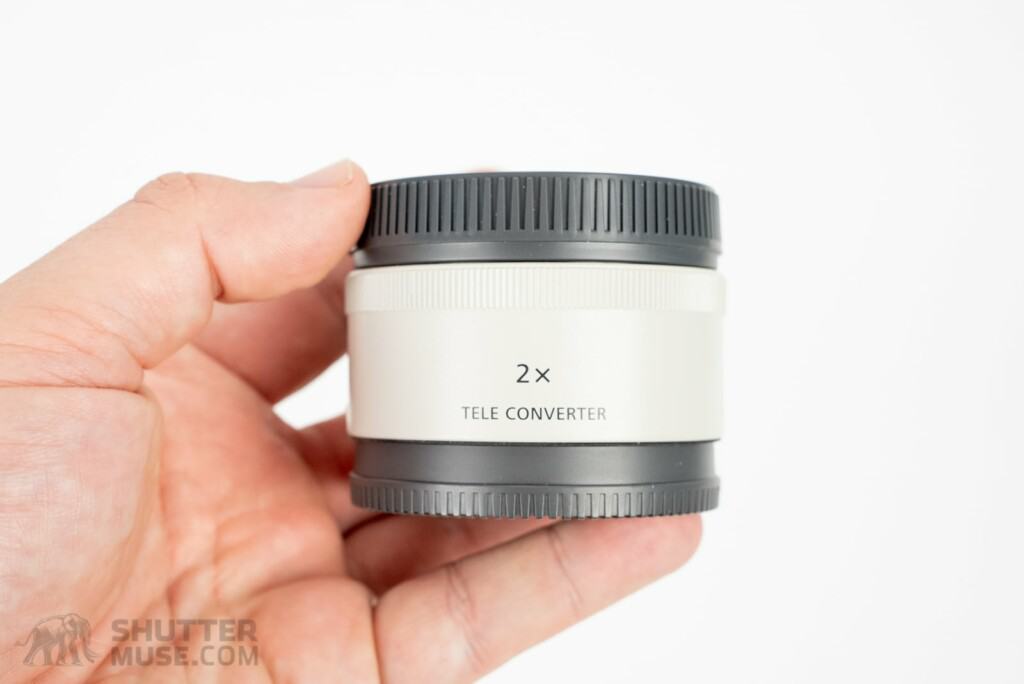
These are all logical considerations. Still, the key thing that is the crux of this article is that they all rely on the performance of the 300mm f/2.8 GM with both the 1.4x and 2x teleconverters. A 200-600mm G or 400-800mm G user will not likely be happy with just a 300mm focal length. However, the 300mm/420mm/600mm combination of the 300mm GM with both teleconverters may be a viable alternative. A 400mm GM user will not likely be happy with a 300mm focal length; they will need to see the 300mm GM’s performance with the 1.4x teleconverter. And, of course, a 600mm GM user will not be happy with a 300mm focal length; they will need to see the 300mm GM’s performance with the 2x teleconverter.
As you can see, the teleconverter performance of the Sony 300mm f/2.8 GM lens is paramount. Mainly because this lens is aimed at sports and wildlife photographers, and yet, nobody would ever say that a 300mm focal length is enough for enthusiastic or professional shooting of either genre. The benefit of a 300mm f/2.8 prime in any lens catalog has always been focal length flexibility with teleconverters. Few photographers will ever buy the 300mm GM lens with the express intent of only ever using it “bare.”
Can You Stack Teleconverters On The 300mm f/2.8 GM?
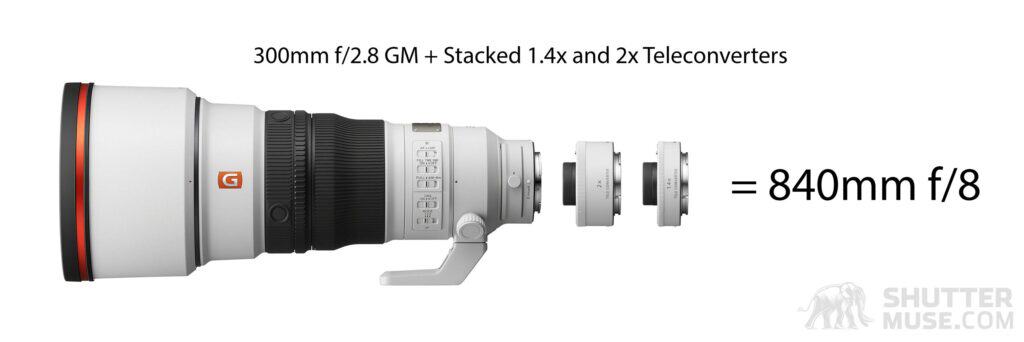
If you decide to buy the Sony 300mm f/2.8 GM and both the 1.4x and 2x teleconverters, you might wonder if it would be possible to stack them. This could give you a focal length of 840mm with a maximum aperture of f/8.
Due to Sony’s teleconverters’ design, it’s impossible to stack them together directly. The protruding black rubber-coated lens element cannot be inserted into the second teleconverter due to the rear lens element of the teleconverter. However, you can ‘hack’ this into working by placing an extension tube between the two teleconverters at the loss of infinity focus. Sony does not make E Mount extension tubes, but third-party ones are readily available; I recommend these.
While you can stack teleconverters on the Sony 300mm f/2.8 GM lens, I generally do not recommend it. Doing so will cause a noticeable drop in sharpness, contrast, autofocus performance, and the inability to focus on subjects far away. Any resulting images might be ok for low-resolution web usage, but they fall below what I consider acceptable professional results. In this case, you are better off cropping the image after shooting it and, if necessary, enlarging it afterward using something like Topaz Gigapixel.
Conclusion
The Sony 300mm f/2.8 GM lens produces outstanding results with the attached 1.4x and 2x teleconverters- the best I have seen in any lens. Sony understood that many people would use this lens in combination with teleconverters and worked hard to ensure optical and autofocus performance was minimally degraded. In short, I had high hopes, and all were exceeded.
When I need a 300mm focal length, I’m happy to reach for this lens. It is one of Sony’s sharpest, if not the sharpest, prime lens in their lineup. In the context of this article, though, what’s important to know is that I’m also happy to reach for this lens when I need a 400mm (420mm) or 600mm focal length. This includes the times when I’d need to shoot wide open. While there are small gains in sharpness by stopping down when a teleconverter is attached, wide-open shots are still fantastic, and side-by-side shots with my 600mm f/4 GM show impressively close results.
I’ll always keep the 600mm f/4 lens in my arsenal for the times I need to reach 840mm or 1200mm with the teleconverters, mostly while photographing smaller birds where reach is everything. I also love the 300mm GM + 600mm GM pairing for traveling to wildlife destinations where I’m not sure what I’ll find or when I know I’ll photograph a broad mix of larger mammals and smaller birds. Still, for days when I can only carry one larger lens, especially when my targets are larger mammals or birds in flight, I reach almost every time for the 300mm GM + teleconverters these days. The combination of focal length flexibility (300mm/420mm/600mm), incredible sharpness, and outstanding handling while maintaining a relatively wide maximum aperture (f/2.8, f/4.0, f/5.6) makes this easily one of Sony’s best lenses for wildlife and sports photographers.
Where to Buy
It’s always appreciated when you use my links to make your purchases. The Sony 300mm f.2.8 GM lens and Sony teleconverters are available through the links below.
- Sony 300mm f/2.8 GM – Amazon / B&H / Adorama / Lensrentals / WEX (UK) / Camera Canada
- Sony 1.4x Teleconverter – Amazon / B&H / Adorama / Lensrentals / WEX (UK) / Camera Canada
- Sony 2x Teleconverter – Amazon / B&H / Adorama / Lensrentals / WEX (UK) / Camera Canada

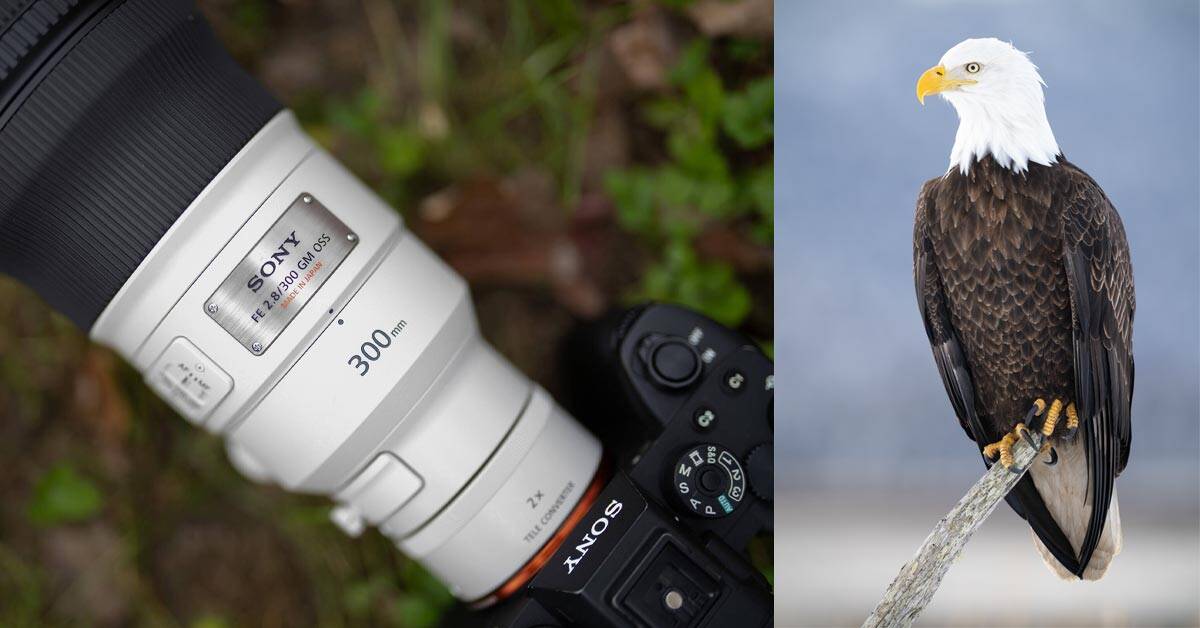




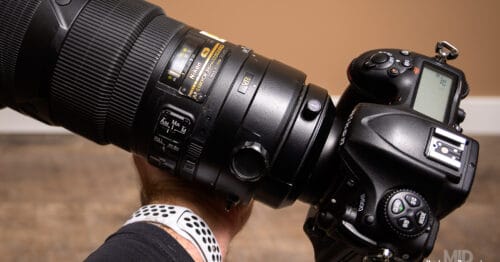
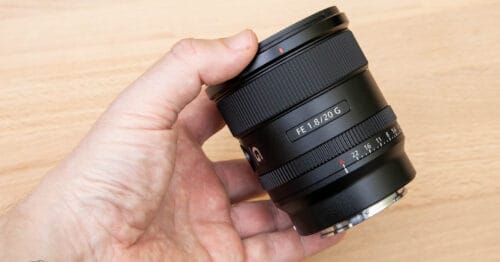

Yep. I went the same route but with the 400/2.8. It’s optical quality with the TCs was excellent. I shot birds a lot at 800mm. The only wrinkle was at that, it was sensitive to camera movement and I tend to mash the shutter. In the end though the whole rig was too heavy to stand, armed and waiting, for a bird to do something interesting. I hated using supports and always did handheld. My solution was to return to Nikon and the PF lenses: so much more compact and lighter.
I have never commented here but can’t resist this time. Sony missed a GOLDEN opportunity!!! Just follow Nikon and make one with an internal teleconverter via a flip of the switch! Having to put a teleconverter on and off totally defeats the purpose of this lens as nobody has the time in the field. I will NEVER buy a prime like this without an internal teleconverter. In fact, I am drooling over the Nikon 400/2.8 with the built-in converter and am actually planning to go back to Nikon once my camera goes bad one day. If Sony’s 300mm had built-in teleconverters it would sell like hot cakes and I would not hesitate to trade in my 600/f4 for it. Too bad!
Hello,
A comparison between the Sigma 500 5.6 and the Sony 300 2.8 +2x would seem interesting:
– identical weight
– identical aperture
– but half the price
Regards